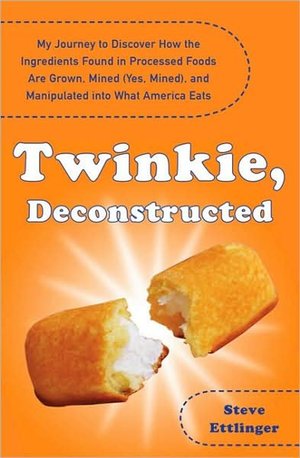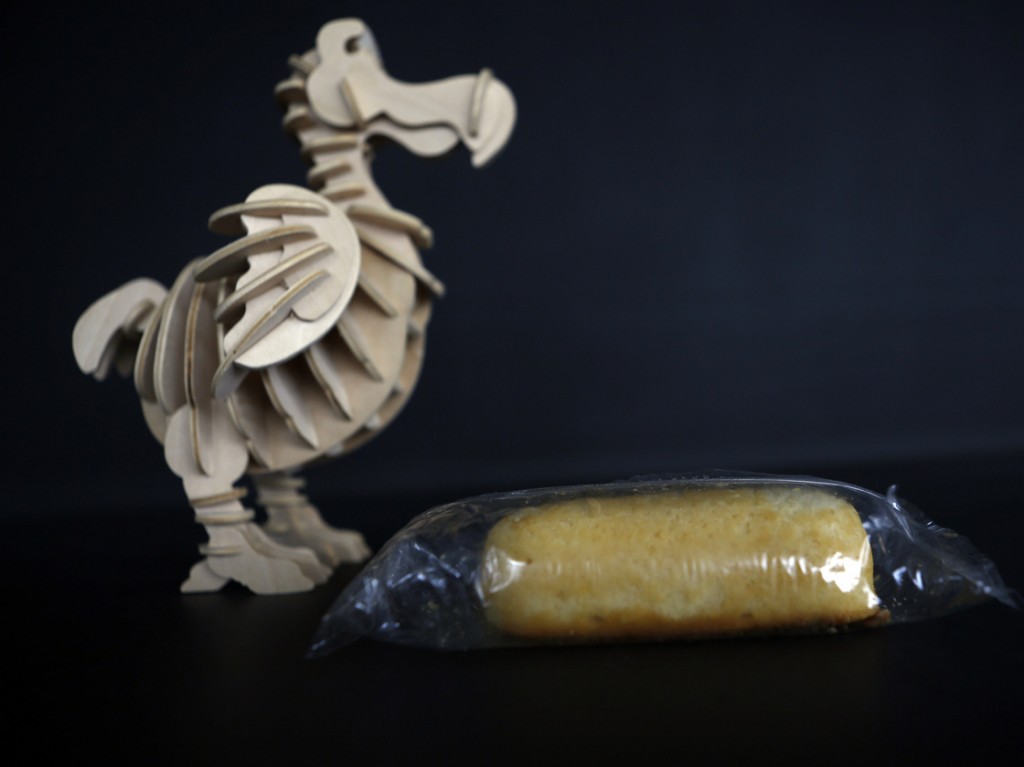"Perhaps disappointing to foodies, it's mostly flour and sugar," he tells The Salt.
So why does the Twinkie persist in the popular imagination as a paragon of delicious, unnatural food creations? Perhaps it is the way the snacks seem to override our senses. Unwrapped from their plastic packaging, these sponge cakes appear impossibly soft, their filling so creamy — not rancid, as logic tells us that any milk product left out for days must surely be.
Indeed, most of the items on Twinkies' long list of ingredients go into pulling off that hat trick. Normally, you need butter, milk and eggs to give cakes their moisture and tenderness.
 But butter, milk and eggs spoil, so Twinkies needed a way to defy the laws of baked-good longevity. That job is filled by ingredients like monoglycerides and diglycerides, emulsifiers, also found in real milk, that love to bind with oil, and sodium stearoyl lactylate, which likes to bind with water, Ettinger says.
But butter, milk and eggs spoil, so Twinkies needed a way to defy the laws of baked-good longevity. That job is filled by ingredients like monoglycerides and diglycerides, emulsifiers, also found in real milk, that love to bind with oil, and sodium stearoyl lactylate, which likes to bind with water, Ettinger says.
The butter flavor comes from diacetyl, the same compound food scientists use in microwave popcorn and "buttery" Chardonnays.
Eggs get a culinary understudy: Polysorbate 60, an emulsifier derived from oil palm trees, corn syrup and ethylene oxide (which, Ettlinger says, is "derived from an oil well"). With polysorbate 60, he says, "you can get this wonderful goo that resembles egg yolk, only more powerful." There is the teensiest big of real egg in Twinkies – about 1/500th of an egg in each cake, by Ettlinger's calculations. "I could never fathom why," he says.
Interestingly, though all these ingredients help extend the Twinkies' shelf life, the only proper "preservative" used is sorbic acid, he says.
So yes, there's a lot of food science packed into the yellow baked snack, though the exact proportions of the recipe remain top secret. (Ettlinger says he was once jokingly told by a Twinkie bakery in Maine that "if I knew the actual recipe for the crème, they would have to kill me.")
And though we're dying to know just what changes Hostess Brands LLC has made to keep Twinkies "fresh" nearly twice as long — from 26 days to 45 days — when they return to shelves on July 15, that, too, is likely to remain a mystery. (A spokesperson for Hostess, which is under new ownership, told the Associated Press that the longer-lasting Twinkies were actually introduced by the old company shortly before it was liquidated.)
Of course, we've all heard of people who've kept their Twinkies around for much longer – including a Maine school that's held on to one snack cake for nearly 40 years, part of a very long-running science experiment. (That Twinkie hasn't crumbled yet, but in photos, it appears a ghastly ash gray.)
Heck, at NPR's Science Desk, we even started our own experiment a year-and-a-half ago, after hearing of Hostess' financial woes. Our findings? So far, the subject shows no signs of disintegrating — or of still being edible: It's now hard as a rock.
Copyright 2013 NPR.

